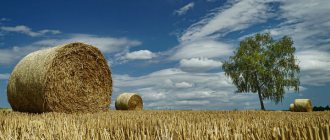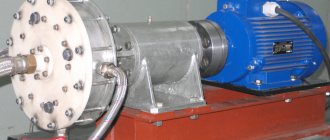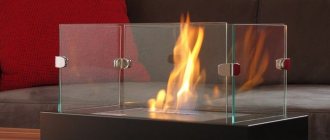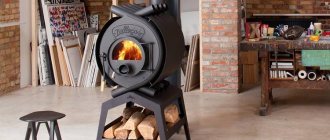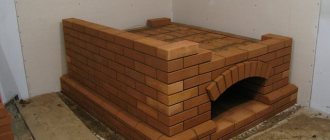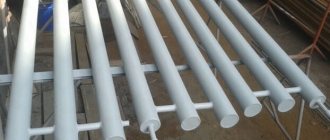Pellets are sawdust granules, for the production of which waste from the forest industry is used. The production of pellets from sawdust is even more relevant in the context of the general orientation towards waste-free production. Sawmills and sawmills are a source of recyclable materials such as shavings, sawdust, and sometimes large wood trimmings that cannot be used in the main production. This waste subsequently becomes the main resource for the production of wood pellets and blocks.
Brief business analysis: Costs of organizing a business: 1.5 – 2 million rubles Relevant for cities with a population: no restrictions Situation in the industry: high competition Difficulty of organizing a business: 2/5 Payback: 10 – 12 months
Pellet production as a business
The main advantage of pellet production is the low cost of raw materials and stable demand for finished products. On average, the cost of sawdust is 5 times lower than the finished product, and it is not uncommon for an entrepreneur to be able to obtain raw materials absolutely free.
According to fire safety standards, there are restrictions on the storage of waste on the territory of wood processing enterprises. This means that if the total volume of sawdust, shavings, bark and trimmings exceeds the norm, the enterprise must immediately remove or dispose of the excess, otherwise it will face penalties.
In this case, anyone who offers to remove waste using their own transport will be answered with consent. Of course, such cases are relevant only for those enterprises that do not have their own waste processing line and production of products from recycled materials.
However, even if you purchase components at market prices, the profitability of the business is beyond doubt. The success of such an enterprise is also ensured due to the high demand for its products. Pellets are used as fuel for stoves, fireplaces, hybrid boilers and even for cars.
In addition, pellets are used to fill cat litter. Despite the fact that the demand for products is great in Russia, some companies export their products to Europe.
Pellet production technology
The wood pellet production process consists of the following steps:
- Coarse crushing of the material occurs. If bark, knots and wood trimmings are used as raw materials, they are crushed to sizes not exceeding 1.25 cubic meters. cm. This is necessary for better drying before fine crushing.
- Drying is carried out in a drum or belt dryer. As a result, the moisture content of the material should be in the range of 8-12%.
- Fine crushing brings sawdust to a state optimal for pressing and forming granules directly. Depending on the class of the final product, there is a filter for the volume of sawdust: up to 1.5 cubic meters. mm for the production of first class pellets or up to 4 cubic meters. mm for industrial.
- Before pressing, fine sawdust goes through a water treatment process. If the humidity of the material drops below 8%, this may have a negative effect on pressing and molding, therefore, if the humidity is insufficient, the sawdust is treated with water or steam. Water is supplied using screw mixers.
- Pressing is the final stage of product creation. Presses come in various shapes, most often rectangular or cylindrical. After leaving the mold, the granules are cooled for better molding and hardening after processing at temperatures reaching 90°C.
- Before submitting the finished product for packaging, it is sifted to filter out crumbs and substandard products. Such waste moves to the initial stage and becomes raw material for the next batch.
Production flow diagram
In order to produce fuel pellets that meet all the required characteristics, it is necessary not only to use high-quality raw materials and special equipment for the production of pellets for these purposes, but also to strictly adhere to the technology.
Technological scheme for the production of fuel pellets
The pellet manufacturing process consists of several stages.
- First, the wood raw material is cleaned from foreign impurities and its primary crushing is carried out. As a result of this process, for which conventional crushers are used, wood raw materials are divided into fairly large fractions.
- This is followed by drying, during which the moisture content of the wood raw material is brought to a value not exceeding 12–14%. For drying raw materials, drum or aeration type installations are used.
- After drying, the wood raw materials are subjected to finer grinding, for which hammer-type crushers are mainly used. The output from such installations is fine sawdust or even crumbly wood pulp, reduced to the state of flour, from which the highest quality fuel pellets are produced.
- If, after repeated grinding, the moisture content of the resulting wood pulp does not reach the required minimum value (10–12%), this parameter is artificially increased using steam or ordinary water for this purpose.
- After the parameters of the raw material for the production of fuel pellets are brought to the required values, it is fed to a pressing plant - a pelletizer. In such installations, which may differ from each other in design, the bulk mass is pressed through the holes of the matrix, resulting in the formation of dense cylindrical granules of a certain diameter. Exerting significant pressure on the crumbly wood pulp promotes its spontaneous heating. At the same time, a natural component is released from it - lignin, which has good binding properties. It is this component that ensures the formation of a dense briquette with a stable internal structure from individual particles of crumbly wood raw materials.
- Matrices, in the working cavities of which crumbly wood raw materials are converted into dense fuel briquettes, can be cylindrical or flat. Installations of the first type, as a rule, are produced in a stationary design and are used primarily to equip industrial enterprises. Their design includes a special cutting device that allows the production of pellets of approximately the same length. Flat-type matrix installations, which can be equipped with one or more rollers, are characterized by compact dimensions. This type of equipment is most often used to organize the production of pellets at home or in a small enterprise.
- The finished pellets, the temperature of which, as a result of their spontaneous heating during the pressing process, can range from 65 to 90°, are cooled, dried if necessary, and then packaged and sent to consumers or to a warehouse.
The stages of pellet production are demonstrated in detail by relevant videos that are easy to find on the Internet.
Equipment for the production of pellets
Equipment for making wood pellets may vary depending on the scale of production. For example, a full-fledged granulation line consisting of 15 main elements will cost about 1.8 million rubles. It is more profitable to purchase such equipment directly from the manufacturer.
To save money and reduce initial investments, you can assemble the line yourself. The main means of production are the following mechanisms:
- Wood chipper - from 180 thousand rubles.
- Raw material dryer – from 400 thousand rubles.
- Granulator - from 50 thousand rubles (on average 200-300 thousand rubles).
- Finished product cooler – on average 400 thousand rubles.
Thus, self-assembly of a production line will cost approximately 2 times less, however, the capacity of such a complex will be several times less. It is also possible to purchase cheaper Chinese equipment or buy back used devices, but with such savings the risks also increase.
We recommend reading:
- opening a workshop for the production of chipboards
- laminate production
- wooden staircase manufacturing business
- pallet production as a business
How to organize a pellet production plant
To organize a production workshop of medium capacity, a room of 100 square meters is sufficient. meters with good access roads and a 380 V power supply. If there are two gates in the room, it is most effective to position the line with the beginning in close proximity to one and the end at the other. Thus, the need to move raw materials will be limited to a few meters, as well as the movement of finished products during loading. If the gate is located in one wall, the line can be rotated 180 degrees.
Since the production process is fully automated, servicing the equipment requires only one person with sufficient qualifications to monitor the operation and assess the current condition of the mechanisms. This role can be performed by either the entrepreneur himself or an employee.
When loading large volumes of finished products, as well as for cleaning the premises, an additional 1-2 laborers will be required. For diagnostics and scheduled maintenance of mechanisms, you can invite an outsourced mechanic.
Homemade granulators
Although a lot of equipment is required for the production of pellets, the main device is a granulator. With its help, pellets are formed from raw materials. There are several models of granulators:
- Screw. The structure is similar to a household meat grinder. The same screw shaft and matrix - a grid through which raw materials are pressed. They can be used for soft materials such as straw. It doesn’t “pull” wood, even well-chopped wood—it doesn’t have enough effort. In principle, if the parts are strong enough, you can install a more powerful motor.
Schematic diagram of a screw extruder (granulator)
- With a flat matrix. There is a metal circle in which holes of the required diameter are made (usually 3-4 mm). There are toothed rollers that force the raw materials through the holes, forming granules. Design of the main unit of a granulator with a flat matrix
- With a round matrix. The idea is the same, only the matrix is made in the form of a ring, so the rollers are located in a different plane. This option has greater productivity, but granulators of this type are rarely made by hand.
Structure of a granulator with a cylindrical matrix
The simplest screw extruder in structure. It is often made for pressing feed, but can also be used to make fuel pellets from soft raw materials. If you need to make equipment for the production of pellets, this is the easiest option. Provided you know how to operate a lathe and welding machine.
Homemade screw granulator
As with any equipment of this type, the screw granulator has a matrix. In this case, it is similar to the mesh of a meat grinder, only it is made of a much thicker plate. The second important unit is the screw shaft. All these details can be made with your own hands. How to describe it in words is useless, watch the video.
Making a matrix for a finished screw.
The screw and matrix are “packed” into a housing or sleeve. How to make it, see in the next video.
After assembling the main unit, you need to install a motor with a gearbox and a hopper into which chopped straw will be supplied. You can run it.
Making pellets at home
The production of pellets at a home mini-plant is a separate market segment that has many advantages over large-scale production. For example, despite the fact that the overall profit from home production is several times lower, the payback period for a mini-installation is also less than the payback period for a medium-sized line, amounting to 2-3 months.
To organize compact production, there are also mobile versions of granulators that operate not only from the mains, but also from diesel fuel and even from a tractor engine. Such devices have a minimum of functions, in particular, they do not grind raw materials and do not control the degree of humidity, but they produce a finished product of lower quality, at minimal cost.
This installation is convenient in that it can be operated on a truck directly at the site of raw material production (near the sawmill). The tractor installation allows the use of grain crop waste as a raw material, which is also suitable for the production of pellets.
Do-it-yourself pellets: making your own granulator
One of the modern types of solid fuel for stoves, fireplaces or boilers for home heating systems are pellets - compressed mini-briquettes that are obtained from logging waste or wood processing industry enterprises. Thus, two important tasks are solved at once - providing consumers with fuel and rational disposal of waste, which previously was often simply burned without any benefit.
DIY pellets
Pellets are very convenient to use, especially since boilers have been developed specifically for this type of fuel, equipped with capacious loading bins and lines for automatic continuous supply of pellets into the combustion chamber (more information about this can be found in the corresponding publication on our portal ). Many models of such heating devices are intended for domestic use in autonomous heating systems of private houses. Therefore, the growing interest of owners of individual housing in finding reliable suppliers of this type of fuel is understandable. Many homeowners, moreover, wonder whether it is possible to make pellets with their own hands.
This article will discuss the main advantages of granular solid fuel, the technological stages of its production process and the equipment necessary for this. Those readers who want to make pellets with their own hands should realistically evaluate the available possibilities, weigh the pros and cons in order to be convinced of the rationality and economic justification of this approach to the problem of independently providing their own homes with granulated fuel.
What are pellets and their main advantages
Pellets are compressed mini-briquettes (granules) of a cylindrical shape with a diameter of 4 to 8 ÷ 10 mm, a length usually from 15 to 50 mm. The raw materials for their production can be a variety of materials.
A wide variety of materials can be used as raw materials for the production of pellets.
- Most often, waste from wood processing plants is used for granulation - sawdust or small shavings. Such pellets are of the highest quality.
- Wastes from logging and primary wood processing - bark, branches and even dried leaves or pine needles - are also processed.
- They actively use waste from agro-industrial technologies as raw materials - straw, sunflower husks, cake, grain waste remaining after flour milling lines or cereal production.
- Pellets are made from peat - in this form, this type of fuel will provide maximum energy efficiency.
- At large poultry complexes, lines for the production of pellets of chicken manure are often installed - problems of both recycling and waste-free production are solved.
- Modern processing technologies make it possible to use even sorted municipal solid waste for the production of pellets.
Of course, pellets made from various materials differ greatly in quality and in their potential energy output. It is customary to distinguish three main types of such granular fuel:
Pellets themselves can differ in quality class
- Premium class pellets are considered optimal for use in autonomous heating systems. They are made exclusively from highly purified wood waste. They are distinguished by a pronounced light shade and uniformity of structure. Such pellets have a minimum percentage of ash content - the non-combustible residue is only up to 0.5% of the total mass of the fuel. The vast majority of pellets produced for mass consumption belong to this class. Perhaps the only significant drawback of this fuel is its fairly high price.
- Pellets of the so-called industrial (industrial) grade may include a certain small percentage of particles of bark, soil impurities, foliage or pine needles. Their ash content is, of course, much higher, but their energy intensity is still quite high, which makes it possible to use them in a home heating system, subject to more frequent preventative maintenance on boiler equipment. But the cost of such fuel is already significantly lower. They are noticeably darker in color than “premium class” pellets.
- The lowest-grade pellets on an industrial scale are obtained from agricultural waste and other materials. Their ash content is very high - up to 4% or even more, and they are not distinguished by their high energy intensity. However, their low price makes their use in large boiler houses profitable.
By the way, some types of pellets can be used not only as fuel for combustion in stoves and boilers. They are used, for example, for fertilizing and mulching the soil, as adsorbents and cat litter fillers.
What other positive qualities do pellets have:
When pellets are burned, non-hazardous substances that participate in natural metabolism are released into the atmosphere.
- They are among the most environmentally friendly types of fuel - the content of harmful and active substances in exhaust gases is minimal. This is mainly water vapor and carbon dioxide, which are easily absorbed by plants.
- Pellet fuel lends itself well to pyrolysis, and this makes it possible to use it in appropriate, highly efficient long-burning boilers. The use of automatic loading lines allows minimizing human participation in the operation of boiler equipment.
- Such fuel is very compact and does not require large areas for organizing its storage. Transportation of the necessary fuel reserves will also require much less costs.
Pellets are easy to transport and store
- No chemical additives, adhesive mixtures or modifiers are used in the production of pellets. They do not have unpleasant odors, are not capable of causing allergic reactions, and can be stored even in close proximity to residential premises.
- The heat transfer of high-quality pellets, especially in volumetric ratio, exceeds most types of ordinary wood and coal.
- Pellets are not subject to processes of internal rotting or decay. This virtually eliminates the possibility of their self-ignition.
- Quite often, pellets are also the most inexpensive type of high-quality fuel in the region, especially if there are production enterprises involved in their production - long-term contracts can be concluded for certain volumes of wholesale supplies.
Find out how to make a pyrolysis boiler with your own hands from our new article.
Prices for garden waste shredders
Garden waste shredders
What is the technological process for making pellets?
The entire technological process for the production of granular solid fuel is divided into several stages.
Scheme of technological stages of pellet production
- Initial preparation and primary crushing of raw materials. If possible, wood or agricultural waste is sorted, cleaned of unnecessary impurities and transferred to the primary crushing line.
Stationary crusher for primary grinding of wood
Conventional crushers, stationary or mobile, which are used in logging or wood processing enterprises, and sometimes even in private households, produce chips with a size of 30-50 mm and a thickness of 1-2 mm.
- The next mandatory step is drying the crushed raw materials. For the further production process, it is required that the residual moisture content of the wood does not exceed 12 ÷ 14 percent. To do this, the raw materials are sent to drying units using a drum or aeration operating principle.
Drying unit of aerodynamic principle of operation
- The dried wood is transferred to the fine grinding line. Most often, hammer crushers (mills) are used here, which reduce the wood chips to the state of fine sawdust or even “wood flour”. The maximum fraction of wood particles at the output should not exceed 4 mm. The typical density of the material at the output of this production line is about 150 kg/m³.
The hammer mill brings the raw material to the required fine fraction
- It often happens that after drying and final grinding, the residual moisture in the crushed raw materials will not be enough to form strong granules. To eliminate this problem and bring the humidity to the required 10 ÷ 12 percent, a water treatment cycle is carried out - saturating the raw materials with hot steam or ordinary water. Steam is used when using hardwood or old wood that has lain for several years as a raw material. For softer varieties, water immersion is usually used.
- Once the required humidity is achieved, the raw materials are transferred to the pressing line. In special installations, it is pressed through matrices that have cone-shaped holes of a certain diameter. The special shape of the channels promotes maximum compaction of sawdust. In addition, under the influence of pressure and an inevitable increase in temperature, wood has a special substance - lignin, which is always included in its biochemical composition. Lignin promotes strong bonding of the smallest fragments into a fairly dense pellet structure.
Molded pellets emerging from a cylindrical matrix.
Matrices can be cylindrical or flat type. The raw material, pressed into cylindrical briquettes, is cut with a special knife at each full rotation of the matrix, thereby achieving approximately uniform linear dimensions of the resulting pellets.
Approximate diagram of pressing pellets through a cylindrical matrix
Cylindrical matrices are most often used in stationary industrial installations. In compact models of granulators, preference is given to flat matrices using two or more rollers.
In small-sized installations, round flat matrices are more often used
- The pellets obtained at the exit from the pressing line are cooled, as they can have a temperature of up to 65 ÷ 90 degrees, dried naturally, and then packaged in bags and sent to the finished product warehouse, to retail chains or directly to consumers.
Video: full production cycle of pellet production
Production of pellets on a private farm
What seems quite simple in the industrial production of granular fuel will not always be possible or cost-effective when trying to organize this on a personal scale. The problems lie in the following:
- To produce pellets, it is necessary to have specialized equipment - a granulator. Similar low-capacity installations are produced by some companies (European or Chinese), but their cost is quite high, sometimes reaching several hundred thousand rubles. You can order a similar machine from private craftsmen who have mastered the production of such equipment - there are a lot of offers on the Internet. However, individually manufactured high-quality equipment costs, perhaps, no less than factory equipment.
In numerous articles on various sites you can find the statement that such equipment is not difficult to make yourself. It is unclear what motivated the authors of such publications when they painted such rosy pictures. Indeed, you can make a granulator yourself, but this process cannot be called uncomplicated. Preparation of the necessary parts, assembly of the rotation transmission mechanism, precise adjustment of all moving parts taking into account the enormous loads arising during the granulation process is a task of a high degree of complexity, accessible to craftsmen who are well versed in the properties of metals and their processing technologies. High-precision turning, milling, welding, and plumbing work will be required, requiring real, professional qualifications. Before you start manufacturing, you need to very soberly assess your capabilities.
- The second important aspect is the availability of raw materials. If you plan to make pellets at home, as they say, “from scratch,” then you will need installations for crushing the material and its mandatory drying. Will this be economically profitable, not even from the point of view of purchasing equipment, but from the point of view of the energy consumption of all processes? In mass production, this pays off in large quantities of processed products, but to meet the needs of an individual farm, a negative balance may develop.
It is probably advisable to take on the production of pellets at home if it is possible to regularly and practically freely obtain ready-made raw materials - crushed shavings or sawdust. Then, perhaps, it will be profitable not only to supply yourself with granulated fuel, but also to offer finished products for sale to other homeowners.
By the way, many granulation devices with a flat matrix do not require a secondary crushing cycle - heavy, powerful toothed rollers can handle this, which should grind the chips to a state suitable for pressing pellets. True, in most cases it is impossible to do without drying wood chips, but resourceful craftsmen make the simplest drum dryers using old metal barrels.
Video: homemade drum dryer made from barrels
- It should be noted that not all wood is fully suitable for making pellets. For example, attempts to granulate sawdust from linden, willow or poplar are almost doomed to failure - the material does not “sinter” well and crumbles at the slightest mechanical impact.
Coniferous wood is considered optimal for these purposes - its natural resin content contributes to the production of stable, durable granules.
Find out how to make biofuel with your own hands, and also evaluate production possibilities from our new article.
What is needed to make your own granulator?
Finding exact drawings of an installation for making pellets at home is very problematic. Those craftsmen who are engaged in the manufacture of granulators are very reluctant to share their secrets, and if they allow someone to use the developments tested in practice, then for very serious money.
The principle of the design and operation of a small-sized installation, its main components, their fastening and interaction are presented in the attached video.
Video: device of a small-sized pellet granulator
So, to assemble the granulator you will need:
- Flat round matrix. It can sometimes be purchased in stores - they are used to make granulated feed. Self-production is also possible, but requires professional tools and equipment. It is necessary to very accurately cut a circle of metal with a thickness of at least 20 mm, mark and drill a hole for mounting the matrix on the shaft with a groove for rigid fixation to transmit rotational force.
The main working parts are the matrix and the block of ribbed rollers.
The pressing holes must have a conical configuration tapering downward - to make them, a special cutter is required, made at the desired angle.
The overall diameter of the matrix can be different - the larger it is, the higher the performance of the device, but the more powerful the power drive will be required.
Video: how the matrix is made
- The second most important structural unit is the powerful rollers with a serrated working surface. They are seated on the shaft through rolling bearings. This unit itself has a hole in the center, which is mounted on the rotating vertical drive shaft, also through a bearing. The pressure of the rollers to the matrix is adjusted using a large diameter threaded nut. When assembling the apparatus, the shaft with rollers is fixed in the eyes of the housing, remaining motionless during operation. The dimensions of the rollers, naturally, must correspond to the working plane of the matrix with holes.
- The body itself is made from a pipe or a cylinder from a metal sheet is welded. The internal diameter must correspond to the size of the matrix, so that its rotation is ensured, but with the minimum possible clearance.
Usually the body is made collapsible. This simplifies the maintenance of the device.
Lower part of the housing with installed gearbox
A gearbox will be installed in the lower part, transmitting rotation from the pulley to the vertical working shaft, so that a rotation speed of approximately 70 - 100 revolutions per minute is ensured. The housing provides a window with a tray for exiting finished pellets.
In the upper, working part there is a matrix and rollers
In the upper, removable part of the body, the actual working unit of the device will be located - the matrix itself with rollers and a shaft fixed with special locking screws on which they are mounted.
Granulator in disassembled state
- The entire structure must be based on a powerful frame - a bed, which can be made from a rolled metal profile (channel, angle, I-beam). Dynamic and vibration loads during operation are very significant, and the frame must be able to easily withstand them. Here, on the frame, installation of an electric drive is usually provided, connected to the gearbox of the apparatus by a belt, chain or cardan drive.
Layout option for granulator and electric drive on a common frame
- The electric motor must be guaranteed to ensure the operation of the installation under maximum load, without overheating itself. Typically, even a small device will require an electric drive with a power of about 15 kW.
- It is advisable to provide a cone-shaped loading hopper placed on top of the housing cylinder - this will significantly facilitate the supply of raw materials for molding pellets.
If everything worked out, the necessary parts and components have been manufactured and carefully fitted, the device operates confidently in “idle mode”, then you can carry out the first test run with loading of shavings or sawdust - neatly formed pellets should appear at the output.
Video: operation of a small-sized pellet production plant
However, the proposed granulator scheme is not at all some kind of “dogma”. Craftsmen also come up with their own designs. The video below shows an installation for producing auger-type pellets - its operation is in many ways similar to the familiar home meat grinder. The only thing is that such a scheme will require raw materials that have been crushed to the smallest fraction - the auger will not be able to grind even small chips.
Video: homemade screw-type installation for producing pellets
How to organize supply channels for raw materials for making pellets
At the moment, there are many ways to obtain raw materials for wood ranula. The simplest of them is cooperation with a wood processing enterprise that does not have its own recycling line. Such cooperation will be in the interests of the enterprise itself, which receives income from another source and is interested in getting rid of production waste.
We recommend reading:
- production of lining –
- production of cat litter –
Description and characteristics of various types of pellets
Pellets may differ in their composition. They can be made from pure wood without any impurities, or from wood together with bark; in addition, sunflower husks, straw, etc. are often added to them. You should know that the higher the content of such impurities, the higher the percentage of ash content of the resulting pellets and, therefore, the lower grade they are.
Pellets with an ash content of no more than 1.5% are considered to be of high quality and can be used both for home boiler rooms and as cat litter for litter trays.
Pellets with an ash content of more than 1.5% are also used as cat litter. For heating purposes, their use is also possible, but this requires special industrial equipment.
It is worth noting that in any case, the ash content of pellets should be no more than 5%.
Sales of finished products
To sell products, you can focus on both the Russian and European markets. Considering the scarcity and high cost of timber in Europe, in Western countries even recycled wood products are valued higher than in Russia, but logistics costs should also be taken into account.
In the case of a home mini-factory, it is better to look for markets in the immediate vicinity of production. When producing large pellets for heating, you need to focus on small businesses and individuals who use wood heating and offer them an alternative. When producing small granules suitable for cat litter, the ideal customer would be pet stores and breeders.
How to write a business plan for making pellets
Drawing up a business plan is a responsible process that requires thorough research and, in many ways, is individual. Important factors when drawing up a plan will be the level of competition in the region, the proximity of sources of raw materials and the availability of potential customers.
You should focus on a 3-month payback for home production and an annual payback for a medium-sized enterprise. However, even if the final calculations turn out to be less optimistic, what is much more important is the entrepreneur’s own expectations from the business and the goals that he sets for himself in the long term.
Production of pellets and fuel briquettes at home
